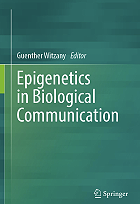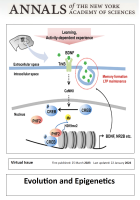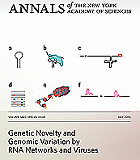Index >
Press > Cellular life coordinates by communicative acts
Article ID: 2 |
Audience: Default |
Version 1.00.02
| 2008/10/1 10:30:00 |
Reads: 7977
The conditions on the planet's surface without living organisms are determined entirely by the sun's energy and the laws of physics and chemistry (Margulis 1999). A planet with living organisms, i.e. with biosemiotic processes deviates considerably from this scheme. The gas composition and temperature will vary in a manner that cannot be predicted exclusively by the laws of physics and chemistry alone...
Such a planet contains incompatible gas mixtures and temperatures whose relatively stable balance is actively con-trolled by organisms.
The interaction between organisms and matter is one in which organisms interpret and structure their abiotic environment according to biological principles. The relationship to other organisms is a communicative one: their mutual behavior underlies change-able rules, within the frame of natural laws, more precisely (semi-otic) rules of sign use with which the biological individuals interact, i.e. coordinate and organize. The difference is that organisms cannot develop such a "to follow or not follow"- relationship with natural laws, but underlie them in the strict sense.
If signs are used, there is according to Peirce, a non-reducible three leveled relationship between (1) the sign-user/sign-interpreter and (2) the signs which designate (3) (some)thing. According to Morris the relationship: (a) between sign-user/sign-interpreter and signs is subject to pragmatic rules, (b) between signs and the designated (some)thing is subject to semantic rules (c) between signs and signs is subject to syntactic rules.
Syntactic rules determine combinatory possibilities - physical, chemical, spatial, temporal, rhythmical. Pragmatic rules determine interactional content. And those which are dependent on pragmatic interactional content are the semantic rules, i.e. the meaning function of signs and sign sequences (e.g. in signaling pathways). Individuals in a population share a common set of signs and a common set of rules
According to Wittgenstein (Philosophical Investigations) rule obeying sign-users/interpreters are never solus ipse subjects (as with Descartes, Kant, Hegel, Husserl, Carnap, Frege, Russel, Tarski, Popper) but always performative participants of communicating communities. Using/interpreting signs is social interacting. Monological acting is an exceptional case.
The monological approach preordained certain ways of posing the basic problems of thought and action: subject versus object, reason versus sense, reason versus desire, mind versus body, self versus other, and so on. (Thomas McCarthy)
Because one sign alone is not a sign and without a sign-using community there is neither meaning, nor interpretation or linguistic action, i.e. active sign use, the social component is the decisive one.






 Phages represent the most diverse inhabitants on this planet. Until today they are completely underestimated in their number, skills and competences and still remain the dark matter of biology
Phages represent the most diverse inhabitants on this planet. Until today they are completely underestimated in their number, skills and competences and still remain the dark matter of biology Genetic Novelty / Genomic Variations by RNA Networks and Viruses
Genetic Novelty / Genomic Variations by RNA Networks and Viruses
 Memory and Learning in Plants
Memory and Learning in Plants
 Biocommunication of Ciliates
Biocommunication of Ciliates Biocommunication of Animals
Biocommunication of Animals
 Biocommunication of Fungi
Biocommunication of Fungi Viruses - Essential Agents of Life
Viruses - Essential Agents of Life "Plants assess their surroundings, estimate how much energy they need for particular goals, and then realise the optimum variant. They take measures to control certain environmental resources. They perceive themselves and can distinguish between ‘self ’ and ‘non-self ’."
"Plants assess their surroundings, estimate how much energy they need for particular goals, and then realise the optimum variant. They take measures to control certain environmental resources. They perceive themselves and can distinguish between ‘self ’ and ‘non-self ’." 


